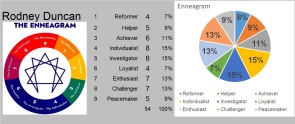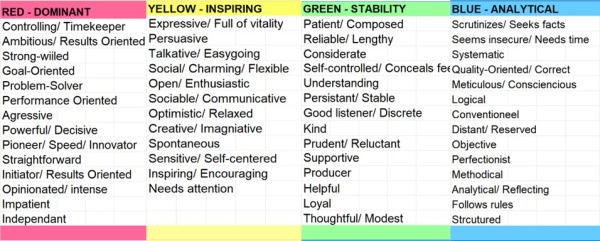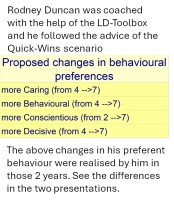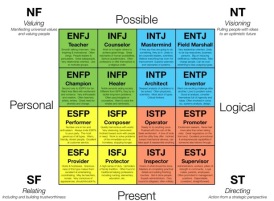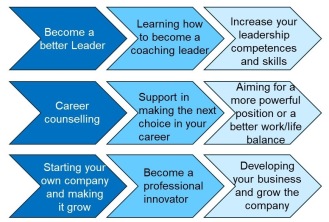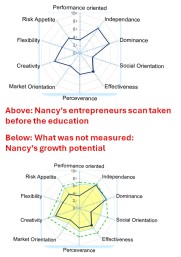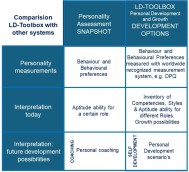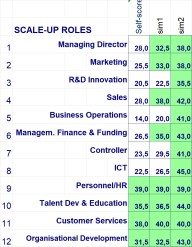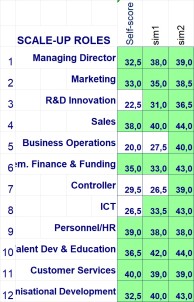about assessments
PERSONALITY MEASUREMENT – WHY DO IT AND WHAT DO YOU DO WITH IT?
You may be asked to undergo a personality assessment by someone else who wants to know something about you. For example, whether you are suitable for a certain role in an organization. This is a choice that must be made at that moment. Or, it may be that you yourself have the need, for example to get to know yourself better or because you want to develop for the future. It is important to know who uses the information about your personality and for what purpose. So, what purpose is intended and what you are going to do with it.
Personality assessments are timeless
A model that has been in use for centuries is the Enneagram.
It is partly based on the kabbalistic tree of life.
Here is an example. Although the purpose of the Enneagram is similar, personal development, the design of the LD Toolbox is not really comparable in our opinion.
Typification
A commonly used assessment instrument is DISC, which can quickly outline someone's behaviour using the color codes Red, Yellow, Green and Blue.
This model became widely known through the book 'Surrounded by idiots' by the Swedish psychologist Thomas Eriksson. We find the DISC concept useful, especially because those who have read the book can quickly recognize someone's behaviour and determine for themselves how they should deal with it. Yet it remains a risk to characterize people's characters so simply. People are much more complex, and above all: people can change!
We see an interesting example of this below about Rodney Duncan (see the two presentations (the downloadable presentations about Rodney Duncan (two presentations you can download: Rodney Duncan and Rodney Duncan 2 years later).
Theories of personality and personality measurement
Historically, a number of explicit models of personality have emerged over the years:
1 The psychoanalytic approach:
Sigmund Freud and Carl Jung
2 The Psychometric Approach:
Hans Eysenck and Raymond Cattell
3 Social Learning Theory:
Albert Bandura and Robert Walters
4 The humanistic approach:
Abraham Maslow and Carl Rogers.
The four approaches are strongly linked. The psychometric approach, which deals with personality measurement, has developed strongly in recent decades, partly due to automation, and has spread beyond the field of psychologists.
- Rodney Duncan English.pdf 1.2 MB

The history of the MBTI® begins in 1943 with Katharine Briggs who developed it together with Isabel Myers based on Carl Jung's theory.Since then, the instrument has been continuously updated and developed by teams of psychologists, including the research team at The Myers-Briggs Company (formerly CPP, Inc.).
MBTI was mainly used for the selection of people for certain positions.
Originally mainly in the American armed forces. People divided into 16 'boxes'.
The MBTI® instrument is not designed to describe every aspect of personality.
It focuses on four preference pairs:
Extraversion-Introversion (E-I), Sensing-Intuition (S-N), Thinking-Feeling (T-F), Judging-Perceiving (J-P)
We (LDpe) consider the Type systems not really suitable for personal development.
USING PERSONALITY ASSESSMENTS FOR COACHING
But a new category of 'users' arose: Coaches had found out that an assessment gave them to possibility to get to know their clients rather quickly. However, taking a snapshot of someone's personality is riskfull, because it is only a snapshot. Especially when the client comes to you because he/she wants to develop and change.
A missed connection
Of course, it is OK to take a photo as a starting point for a coaching process.
But a personality assessment is not an instrument that will help you during the coaching process. An important question is what the candidate will be able do with the inventorized information.
Will it give him/her direction for the steps he/she must take?
A coaching process is, by definition, a process of realising personal development and change! The most odd example is a competence assessment, measuring the fitness of a person who starts an education for acquiring this competence.
My feeling is that the educators/coaches have missed a connection here.They should ask themselves: will the applied instrument help out during the coaching process?
A frightening example
How foolish it is to test people with a 'snapshot' when it comes to their future, we see with Nancy King (really happened). With the Quick-Wins scenario alone (simulation 1) we were able to demonstrate that she was certainly suitable for the training. In fact, within 1½ years she developed into a potentially successful team member for a Scale-Up organization.
Download both presentations and see for yourself how Nancy fared!

Babylonic Language Confusion
Since the beginning of this century, when coaches discovered psychometry many systems have been built that support the coaching of individuals and teams. Unfortunately these systems tend to use different conceptual frameworks. In this way both international systems like TMA, Management Drives, Real Drives, etc., as well as the many local systems created their own vocabulary.
And, an European standard like Entrecomp has great difficulties in getting accepted.
True, we can see some similarities between the different systems. But for the user organisations that want to include their employee information in a broader context and want to use it alongside more widely used models and concepts, may experience some difficulties in integrating the information.
Such organisations can feel hampered and closed in by the vocabulary of the coaching system and too dependant of the coaches of the educational organisation.
LDpe chose a 'right connection' and decided to build a 'connecting toolbox'. A toolbox that gives direction for accelerated growth.
For the design of the toolbox, we found it relevant:
· that a formal measurement of a participant’s personality should be used;
· such a measurement method must be worldwide recognized as a ‘good’ method;
· that the measured results should make the starting point for a person’s reflections;
· that the LDT-vocabulary relates to well-known leadership and professional concepts;
· that the constructs defined, in a straight way, relate to both the concepts chosen
and the scores of the formal measurements.
Essential for the deepening insight of the participant in his/her own personality and for the continuous reflection was the development of a clear and comprehensive vocabulary, a 'structured language'.
The LDT's vocabulary, the concepts and notions of the language are defined and structured according the most used and accepted models and concepts in the domains of leadership and psychology.*)
*) We have, as much as possible, related the LDT to the world's leading theories.
Why the LD Toolbox is a perfect tool for coaching leaders
When coaching leaders, focusing on the future is an absolute must. And because the LD Toolbox (with AI) maps the effects of every possible small change and, for example, proposes a quick-wins scenario, it is possible to help participants accelerate their personal development. For example, look at the story of Tessa Gold's personal behavioral effectiveness.
The effect of this scenario on her leadership styles portfolio is shown here on the right, for example in her growth in the Scale-Up role model: Now no longer only suitable for HR, Talent Development and Training, Customer Services and Organizational development, but also Managing Director, Marketing, Sales, Finance & funding.
She managed to realize her Quick-Wins scenario.

After 5 years we spoke again and a new development scenario was drawn up for her for further growth.
Download both presentations



